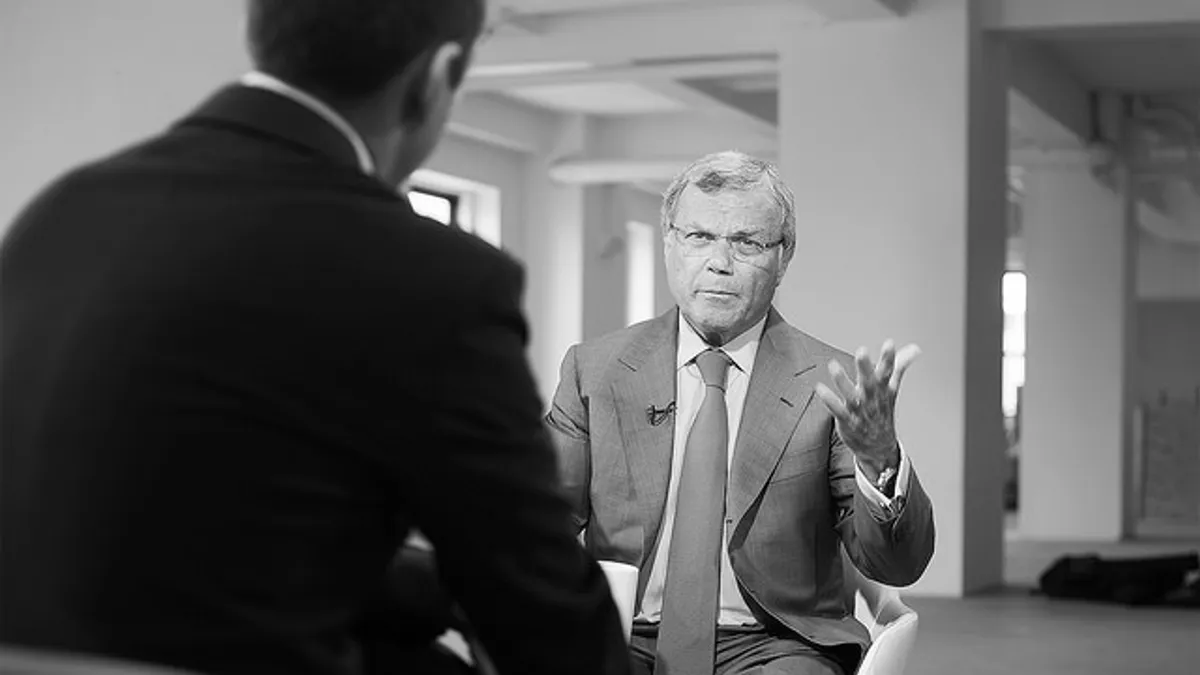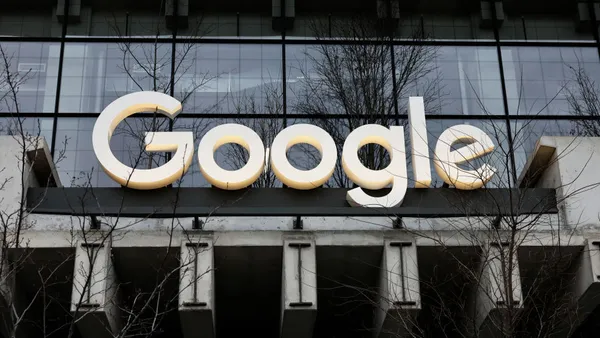Dive Brief:
- WPP, the global ad agency holding company, saw flat like-for-like, top-line growth last year, along with flat operating margins and profits, according to its recently released 2017 Preliminary Results. Shifts in client spending resulted in a 5.4% drop in like-for-like billings. It was the media conglomerate's worst performance in almost ten years since the financial crisis.
- As a result of its rough year, WPP announced plans to accelerate its strategy to integrate offerings. This includes simplifying its structure; creating stronger client coordination across WPP’s global client teams and country managers; developing cross-group capabilities in digital marketing, digital production, e-commerce and shopper marketing; improving sharing functions, systems and platforms across the group; and developing and implementing senior executive incentives tied to WPP performance.
- Following the announcement of the 2017 results, WPP stock fell about 15%, the worst drop since 1999, according to Bloomberg. The stock drop extends WPP’s existing poor market performance. The company lost more than a quarter of its stock value over the last year, or about $8 million, the report said.
Dive Insight:
WPP CEO Martin Sorrell blamed the holding company’s dismal performance on “the long-term impact of technological disruption" and "the short-term focus of zero-based budgeters, activist investors and private equity,” he said in a statement. However, he downplayed the impact of Google, Facebook, Amazon and consultancies on the agency model. P&G's chief brand officer Marc Pritchard this week echoed Sorrell in his call for agencies to be more simplified that was part of comments made at the Association of National Advertisers' media conference. Both also agree that agencies still provide an important value. However, the two executives' vision differ on how simplifying marketing should be achieved, with Pritchard wanting to reduce the CPG giant's interactions with agencies while Sorrell is bent on internal streamlining to better meet the needs of clients.
By speeding up its strategic focus and simplifying its structure, client and country management, WPP, comprised of hundreds of companies, hopes to better align digital systems and capabilities across the enterprise. The strategy is also designed to help WPP become more agile so that it can deliver efficient and effective solutions to clients. Better management and breaking down siloes among its creative, ad buying, strategy and public relations businesses could be key to WPP’s turnaround.
Late last year, WPP cut its 2017 growth expectations to zero, after starting the year with a 2% growth forecast, which it later reduced to 1%. The holding company also projected flat margins in 2017. An earning statement released at the time said big ad holding agencies were holding their own on a win/loss basis when faced with the challenge from digital services divisions from management and financial consultancies, like Accenture and Deloitte. According to the Bloomberg report, as companies cut out advertising agencies that serve as middlemen, consultancies are snapping up the digital marketing work.














